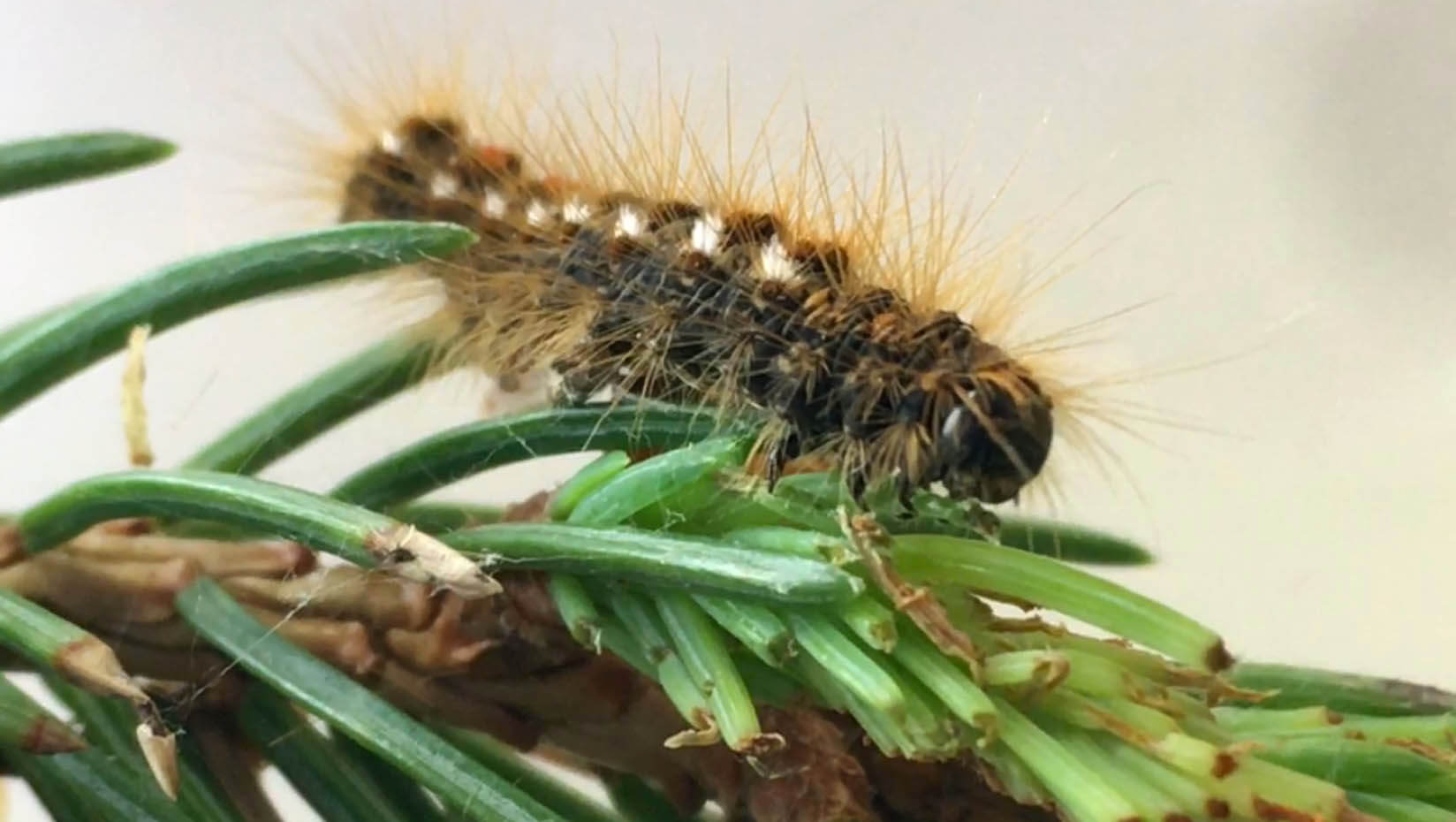
Browntail moth caterpillars can feed on conifers during outbreaks, UMaine researchers discover
Over the past 200 years that browntail moth caterpillars have been studied, the invasive pest has only been documented feeding on hardwood trees. Now, preliminary findings from the University of Maine suggest that mature browntail moth caterpillars also may be able to subsist on coniferous trees.
The discovery — which was made thanks to a chance sighting by a UMaine undergraduate student researcher — might mean that scientists have had an incomplete understanding of the pests’ outbreaks and where they might spread in the future.
Rachel Jalbert was walking down her driveway in Hampden, Maine one day in late May when she noticed something strange: browntail moth larvae on a coniferous spruce tree.
Jalbert knew from her experience as an undergraduate researcher in forest entomology professor Angela Mech’s lab that browntail moth larvae have been thought to feed strictly on deciduous trees and can’t utilize coniferous foliage.
She questioned what she saw. Jalbert’s current research, funded through the National Science Foundation’s REU Initiative for One Health and the Environment, focuses on browntail moths’ attraction to light — not caterpillars on conifers. Maybe she misidentified the insect for one of its many lookalikes, like tussock moth caterpillars, or perhaps the larvae had just fallen onto the spruce from a nearby infested oak tree.
“I’m fairly new to entomology,” Jalbert says. “I haven’t taken general entomology class, so I thought there’s probably a huge chance that I’m really wrong, but I thought I’d bring it up anyway.”
Jalbert brought her observation to Mech, who, instead of dismissing the sighting as a fluke, sat down and investigated with her student researcher. They combed through nearly 200 years of literature and found no mention of browntail moths utilizing conifer hosts.
Then, Jalbert and Mech recruited graduate student researcher Sadia Crosby, and the three set up an experiment isolating browntail moth caterpillars into cups with spruce branches that had both old and new growth.
“The first question was maybe they’re just starving and can eat it, but won’t be able to survive. But they fed on old growth, new growth and molted, which is an indication that they can be successful feeding on conifers,” Mech says.
The discovery, though startling, isn’t completely without precedent. Browntail moths are closely related to spongy moths, which have a similar behavior when they are outbreaking where older caterpillars can utilize different hosts — including conifers — outside of their usual deciduous tree diet.
However, given the impact of the browntail moth on public and environmental health in Maine, the implications of this finding are troubling. Mech says that the existing risk maps tracking browntail moths — and the resulting management strategies — could be incomplete because researchers haven’t been looking for the caterpillars on coniferous trees.
If browntail moth caterpillars are eating coniferous foliage, it could have a different impact on Maine’s forests. One year of defoliation can be stressful to evergreen conifers, compared to deciduous trees that grow their foliage back every season. Plus, if browntail moth caterpillars can feed on conifers, that changes where in Maine they may be able to spread.
“As they move further north and inland, there could be enough suitable hosts to keep the populations present, even if there are less hardwoods,” Mech says.
The browntail moth feeding season is coming to a close, and more trials will need to be conducted next year before the researchers can say what, exactly, the relationship between the browntail moth caterpillar and coniferous trees is. Can the caterpillars feed on conifers beyond spruce? Are conifers a primary or a secondary host for these caterpillars? Has this behavior previously eluded researchers because browntail moth larvae only feed on conifers when they are outbreaking, as they have for the past six or seven years in Maine?
Jalbert is graduating in December, but Mech and Crosby will continue to run trials to substantiate their findings.
“The fact that we’re still learning things about the browntail moth is wild,” Crosby says. “Even though we’re getting close on certain aspects, it still throws curveballs like this. It’s exciting, but we have a lot of work to do.”
Contact: Sam Schipani, samantha.schipani@maine.edu
Categories: News releases; top spot; homepage; Research; Outreach; NSFA;
